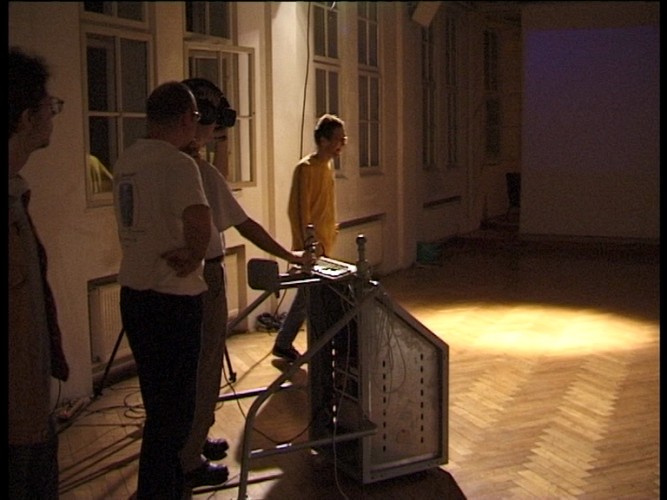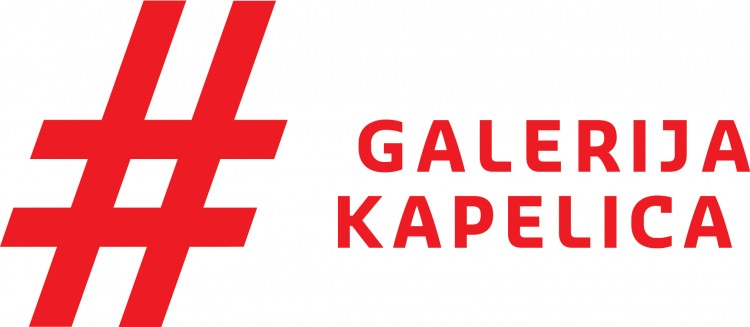This is a period in which hype, accompanied by virtual reality and cyber space with its computer mediated communications, is undeniably over. Despite ideological and euphoric constructions of social cybercultural reception in the early nineties, which were still greatly influenced by it, the VR and net communication technology today is liberated of its magical and ideological superfluity and it doesn’t function within technotranscendentalism and technoplatonism anymore. It has rather penetrated the everydayness, from scientific to the entertainment industry applications (for instance in the digital Arcades). Kreuh’s Virtual Dreams absorb the deconstruction of euphoric ideology within virtual reality. The author is not interested in VR as being some technical bewitchment but rather as the means by which and of how much perception, which is stimulated by the use of VR codes technology, influences our everyday perception of space and imagination for that matter. Plainly put, with the help of sophisticated technology, which we use, the author explores the possibilities of how much our perception is enriched if cybernetic artificial or technocoded units are combined with the natural ones. He is not consumed with the unproductive inquest of or:or (physical space versus the virtual one, natural perception versus the synthetic one) but rather with, metaphorically speaking, a relation, or better, a summing-up of both, which leads to the augmented reality and to augmented forms of perception. Consequently, the author set up the particular installation in the ambient of the Kapelica gallery. In the Arcade games which use VR technology (for example the Dactyl Nightmare game in Cybermind centres) the user of the VR set (goggles with the LC display for each eye and a DataGlove) is bound to the limited space of a platform, while in Virtual Dreams he can freely walk around or travel dozen of metres or more. There are no cables which he would have to drag around (in the 1991/92 famous VR installation Home of the Brain by Fleischmann and Strauss, perception was obstructed due to cables) and the user is entirely free to move even in physical space. This is enabled by the use of a resourcefully designed interface/tricycle that performs the function of a database glove. The goggles in this VR installation are a serial, commercial product, while Kreuh’s DataGlove, which is in fact a carriage, presents a resourcefully designed interface. The viewer-user-walker directs his movement in virtual space by steering the carriage in front of him and, simultaneously, the carriage offers a support and potentiality to smoothly move in physical space, and navigate in virtual space. The carriage is a highly compact, robust tricycle with its inner mass consisting of a series of hardware components (a personal computer with a mouse, sensors and a transmitter). Virtual Dreams dream/drive on two sets, two users can experience them simultaneously and the images that they see in virtual space are projected on two monitors in the hall (the third monitor is used to observe what is happening in the gallery), which is a very inventive element of the installation. Viewers in the Kapelica gallery are thus given an opportunity to monitor the reception of direct users in real time. With electronic, and especially cyber art, locating the social space of such art work is gaining importance, thus Darij Kreuh plans to enable world wide web or Internet access to his Virtual Dreams as well as the option of steering in them. What does the viewer/user see and what kind of a virtual landscape is there in the installation (the author of the software programme is Iztok Bajec)? There are no static pictures and the user confronts the dynamic picture images with the help of a carriage/interface interactively. There are no real pictures but rather four panes with two-dimensional video spots of athletes at the moment when they run towards the finish in record time. An inventive search of the angle from which we see them enables the viewer/user to upgrade the two-dimensional image to a three-dimensional one; this kind of physical dimension is present also in two female torsos, which are turned upside down, a male body, "the interactive cube" which changes its form, and a cocoon which Kreuh used in the last period and is also a part of Virtual Dreams. In addition to moving around three-dimensional modelled objects the user can also break through them; he can cross the border of "a wall" and for a moment his look drifts on to a point where there is no up and down, left or right. He experiences a total immersion into the three-dimensional medium of computer graphics which is so characteristic of virtual reality technology. The iconography which is used in the installation comprises the "technophilosophy" of an accelerated body which is equipped with smart technology (Jean Baudrillard and Paul Virilio’s influence), and of technocoded perception which enables an upgrade of the natural one. Kreuh’s Virtual Dream has already developed its identity in this form/version, but the author of this text comprehends the installation as a work in progress. The existent hardware which includes a resourcefully designed interface-tricycle can be expanded with new programmes for the dream/imaginary package of virtual reality in the future and can include a more sophisticated iconography. Thus it will enable the user an integral perception of the three-dimensional (new)mediascape. The user would probably need a cursor/avatar for his orientation in virtual space which he would have in front of him on his way through space. His identification with it would contribute to the effect of total immersion. Furthermore, improvements of sound effects represent new possibilities in upgrading the project. A sense of tactile feed-back can be simulated to a certain extent, which is essential for the feeling of total immersion at the moment when the user collides with a virtual object and "travels" through it. Despite the fact that we dream Virtual Dreams black-and-white, that the visual effects remain quite minimal and their iconography (still) does not depend upon any highly elaborated and complex poetics, it does represent an installation which is (aside from a few projects by Sreèo Dragan) one of the most proficient works of art in the genre of interactive (cyber)installations in Slovenia.


